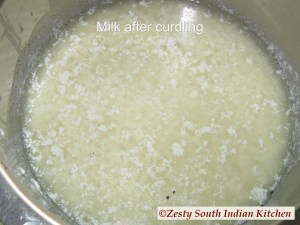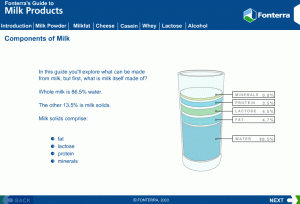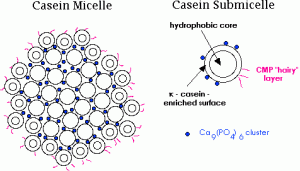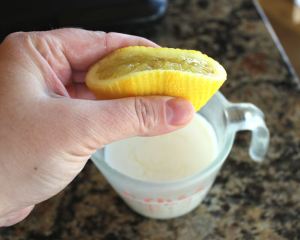http://zestysouthindiankitchen.com/category/paneer
Yuck! Curdled milk is not a treat that we want to drink. Why does milk curdle?
Milk is made up of protein, fat, and water.
http://www.michellepark.com/_screenshots/fonterraMilkProducts.htm
It contains a specific protein called casein. Casein floats freely in groups (called micelles) throughout the milk and does not usually bond to anything. Micelles have a negative charge. Since negative charges repel each other, micelles are evenly dispersed throughout the milk.
http://suppversity.blogspot.jp/2012/04/sipping-casein-ate-not-whey-for-maximal.html
However, when milk becomes acidic, micelles’ negative charges are neutralized. Milk becomes acidic in many ways; for example, when an acid is directly added to the milk (e.g. lemon juice) or when the milk sours. When the micelles neutralize, the caseins start to come closer together. They clump together until clumps can be seen by the naked eye. At this point, we can see the milk curdling.
http://jamiecooksitup.net/2012/05/lemon-blueberry-pancakes/
The process of milk curdling increases with temperature because molecules move along much faster in a hot liquid. The caseins start to clump together much faster. It is much easier to add lemon to milk when both liquids are cold and lemon juice is added slowly.
Too much acid = milk curdling! Stay tuned – I am going to bake a lemon posset – when cream curdles, it creates a smooth pudding-like texture!
Works Cited
Christensen, Emma. “Food Science: Why Lemon Makes Milk Curdle.” The Kitchn. N.p., 29 June 2009. Web. 11 Nov. 2013. <http://www.thekitchn.com/food-science-why-lemon-makes-m-88057>.



